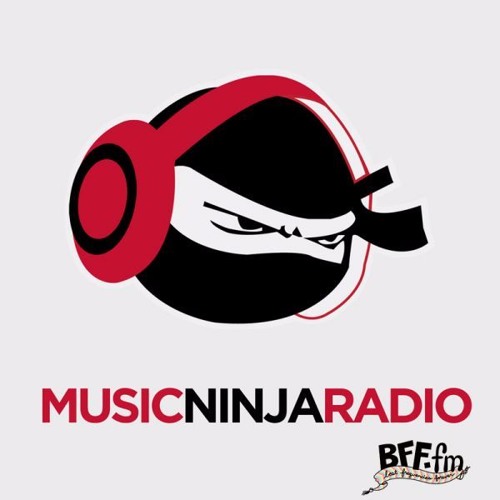
’Kodak to Graph – Los Angeles’
Kodak to Graph approaches electronic music in a powerful, novel way that combines a diverse set of sounds with a sensibility that spans from EDM trap to ambient and trance. His debut album, Isa, embodies his versatility capturing a broad range of emotions telling an elaborate story along the way.
The LA-based talent will be stopping through 1015 Folsom in San Francisco next Thursday, April 30th, as part of his Break the Ice Tour and we’re giving away a pair of tickets to one lucky winner! With support from Big Wild and OBESØN, the show promises to not only be a night full of dancing but also one that showcases some particularly organic up ‘n coming electronic styles. We also were lucky to ask Kodak to Graph a few questions about his musical background, putting together his debut album and his live performances. Get to know K2G a bit better in our exclusive interview and enter the giveaway by inputting your email below! The winner will be contacted via email on April 28th, a week from today. You can also still purchase tickets for the show here.
’Kodak to Graph – Glaciaa’
TMN: Can you tell us a bit about how Kodak to Graph came to be and what your earlier explorations into music involved?
Kodak to Graph: K2G began as an outlet for me to release my sappy loop based ‘post-rock’ music back in high-school. I use to have this delay/loop pedal that would let you loop for about 6 seconds and I would make little loops of guitar, bells, random TV noises, vocals and pretty much anything else that could make noise and kick beats over them for hours. From there I started playing little house shows for my friends and that’s pretty much when I came up with the name Kodak to Graph. The name comes from an old slide projector that I used for visuals. It was called a Kodak Ektographic. I would hang a sheet in front of me, because I was too terrified to perform in front of people, and project slides of old family photographs on the sheet. Most of the first Kodak to Graph recordings were written on my girlfriend’s computer and recorded with one condenser mic. It was all real instruments, the music was kind of reminiscent of old Efterklang, Helios, Sigur Ros etc. There was very minimal electronic influences in the beginnings. The first record I released as K2G, which I don’t think exists on the internet anymore, was all very melodic chilled out ‘post rock’ / math’y oriented music. I started getting into electronic music a few years later through my older brother and that’s really when I started to be like, okay let’s see where this can go.
TMN: Your background clearly spans more than just electronic music. Who are some artists you listened to growing up that have impacted your sound?
K2G: Totally. In middle school I was a die-hard At the Drive In / Mars Volta fan. I think that was the first time I really discovered experimental/ psychedelic music and I remember being so f#@€ing excited and nutty about how alien that type of music sounded to me. I still find myself pulling inspiration from their music to this day. From there I grew into more melodic/math’y/ambient instrumental bands like Lymbyc Systym, Toe, American Football, Joan of Arc, Mice Parade, Mum, etc. I was first introduced to electronic music by my older brother through cats like DJ Shadow, Four Tet, Clutchy Hopkins, Bonobo, Caribou, etc; Which I feel that style of electronic music was the gateway into electronic music for a lot of people my age. We kind of came from that era where guys were sampling melodic folk records over old funk breaks. I still have so much love for that sound.
TMN: Isa, your debut album, has a really fascinating and textured sound. Even with the variation, though, there’s a certain almost theatrical aesthetic that really ties it together. What was the recording process like in creating something that cohesive?
K2G: I wrote the record over a span of 2 years so the recording and writing process on the record was ever changing and evolving. I’m kind of A.D.D when it comes to writing music, so I’ll start tracks by getting really really messy and just layering anything and everything on top of each other then come back to it later and pull layers back. I don’t generally consider how I’m going to make something sound cohesive when I’m writing the music. In the case of ISA, I chose 10 songs out of a bunch of 50+ or so tracks and moved them around and stitched them together until it created the story I was trying to tell.
’Kodak to Graph – Desolation Wilderness’
TMN: What’s the most unexpected sound you used in the creation of Isa and on what song?
K2G: Oh man.. There’s so many sounds throughout the record that were very time and place specific that always bring me back to the period of time when I was writing a specific tune. There is a layer of field recordings in every track on the record. I always have my iPhone out, recording field noises with voice memo, it gives the tracks a feeling of personality that they wouldn’t have otherwise, – a moment that I can hold on to forever., I’m kind of obsessive over it. In terms of sounds that ended up being completely foreign from their original form, The lead plucky high pitched lead guitar part on ‘desolation wilderness’ was a sample of piano and bass from an old 70’s television excerpt that’s pitched up about 60 semitones and reversed, chopped, stretched, delayed, spread, and filtered. The end product was a pleasant surprise but so different from my original intentions.
Continue reading →
Related items:

















